 |
|
Langdon Hills |
 |
West Ham Sanatorium: Dry Street
|
 |
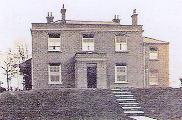 |
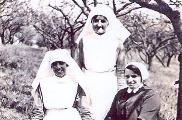 |
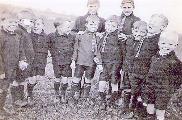 |
 |
Location: Dry Street
Photographer: Unknown
Year of photo: c.1929-40
Copyright: Basildon History Online
Source: Marion Hancock
Comments: The former farmhouse, which provided living
quarters for the hospital Matron and Nursing Sisters. |
Location: Dry Street
Photographer: Unknown
Year of photo: c.1929-40
Copyright: Basildon History Online
Source: Marion Hancock
Comments: Taken out in the orchard, this photograph is possibly of Matron Noble and two Nursing Sisters, the taller of which
could be Sister Holmes. |
Location: Dry Street
Photographer: Unknown
Year of photo: c.1929-40
Copyright: Basildon History Online
Source: Marion Hancock
Comments: A group of boys gathered together for an informal
photograph. |
 |
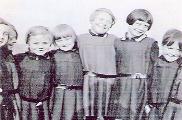 |
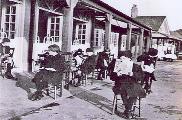 |
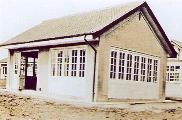 |
 |
Location: Dry Street
Photographer: Unknown
Year of photo: c.1929-40
Copyright: Basildon History Online
Source: Marion Hancock
Comments: Taken out in the grounds, a group of 8 girls
smile for the camera. |
Location: Dry Street
Photographer: Unknown
Year of photo: c.1929-40
Copyright: Basildon History Online
Source: Marion Hancock
Comments: View taken from the girls' end. Some members of staff can be seen standing outside the central
administration area. The outside doors were kept open whenever possible and beds were often placed under the verandah. |
Location: Dry Street
Photographer: Unknown
Year of photo: c.1929-40
Copyright: Basildon History Online
Source: Marion Hancock
Comments: This building, thought to be the schoolroom, stood between the
main block and the Nurses' home. The portico of the central admin area can be made out in the background. |
 |
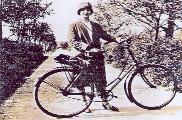 |
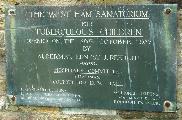 |
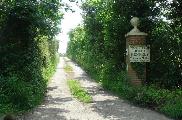 |
 |
Location: Dry Street
Photographer: Unknown
Year of photo: c.1929-40
Copyright: Basildon History Online
Source: Marion Hancock
Comments: |
Location: Dry Street
Photographer: Ray Beer
Year of photo: 17/10/2006
Copyright: Ray Beer
Source: Ray Beer
Comments: Original opening plaque still in place 79 years later. |
Location: Dry Street
Photographer: Ray Beer
Year of photo: 17/10/2006
Copyright: Ray Beer
Source: Ray Beer
Comments: Dry Street entrance and driveway. |
 |
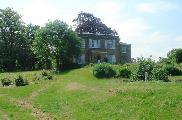 |
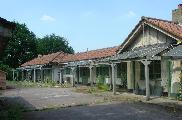 |
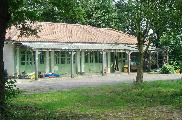 |
 |
Location: Dry Street
Photographer: Ray Beer
Year of photo: 17/10/2006
Copyright: Ray Beer
Source: Ray Beer
Comments: Wootton House seen in 2006, which once provided living quarters
for the Matron and Nursing Sisters. |
Location: Dry Street
Photographer: Ray Beer
Year of photo: 17/10/2006
Copyright: Ray Beer
Source: Ray Beer
Comments: Looking towards the girls' ward accommodation block in October 2006. |
Location: Dry Street
Photographer: Ray Beer
Year of photo: 17/10/2006
Copyright: Ray Beer
Source: Ray Beer
Comments: The boys' ward accommodation block. |
 |
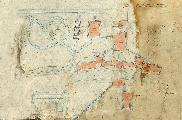 |
|
|
 |
Location: Dry Street
Photographer: Ray Beer
Year of photo: 17/10/2006
Copyright: Ray Beer
Source: Ray Beer
Comments: Sanatorium plan layout. |
|
|
 |
|
|
West Ham Sanatorium - Langdon Hills
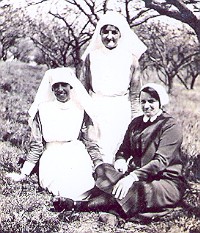 A purpose-built Sanatorium for children suffering from
tuberculosis opened on 26th October, 1927 at Wootton Farm, Dry Street in Langdon Hills. The opening
ceremony was performed by the Mayor of West Ham, Alderman Ernest James Reed, whose council had purchased
the 100 acre site including a large farm house for £12,800.
A purpose-built Sanatorium for children suffering from
tuberculosis opened on 26th October, 1927 at Wootton Farm, Dry Street in Langdon Hills. The opening
ceremony was performed by the Mayor of West Ham, Alderman Ernest James Reed, whose council had purchased
the 100 acre site including a large farm house for £12,800.
A number of locations were considered
including Goldsmith's, a large country residence in South Hill, but this was acquired by another
party. The Wootton's Farm site had first interested West Ham Borough Council years earlier in 1913
but it was not until 1924 that negotiations for its purchase finally got under way.
Its construction was one of a number of initiatives carried out by the West Ham Borough Council aimed at
combating the scourge of Tuberculosis - often shortened to TB - a communicable disease that most
frequently affects the lungs, and much prevalent at that time. The borough's own Tuberculosis
Dispensary had opened in Balaam Street, Plaistow, in 1914 for the diagnosis of suspected cases,
and it was no doubt that it was from there that many of the Langdon Hills patients had been referred.
Various buildings, including a schoolroom and accommodation blocks, were erected in the
grounds - which stand 278 feet above sea level overlooking the Thames valley - and the Victorian farm house
was adapted to provide living quarters for the matron and nursing sisters.
Around forty
children of mixed sex up to the age of 16 were accommodated, with intake mainly coming from the
east end of London. The West Ham Borough Council had earlier in 1912 converted their smallpox
hospital at Dagenham (opened in 1899 at Rookery Farm, Leys Avenue) into a sanatorium (known as
West Ham Sanatorium and later Dagenham Sanatorium*), and that, possibly from the time of the
Langdon Hills opening, was used for adult intake only.
From the time of opening Dr. George Mayberry
(24/07/1883 - 21/11/1961) was the Medical Superintendent at both Langdon Hills and
the West Ham Sanatorium at Dagenham until his retirement in 1949. For the patients
there was no typical length of confinement which varied from months to a number of years.
When the Second World War began in 1939 the hospital remained open throughout the conflict and
an air-raid shelter and blast proofing walls were constructed.
In July 1948 the National
Health Service was introduced and a South East Essex Hospital Management Committee formed
to serve the then Urban Districts of Billericay and Thurrock. The sanatorium was
subsequently passed over to their control and they then had the buildings converted
for adult male patients to commence in 1950. A year earlier on 1st April 1949 the school, which had
become known as Langdon Hills Sanatorium School and administered by West Ham Education Committee**,
was taken over by Essex County Council until it closed on 16th December, 1949 with the
remaining pupils transferred to Highwood School in Brentwood, Essex.
Light entertainment
on the ward was occasionally provided through an extension loudspeaker where the radio programmes
of the day would entertain the patients. In February 1955 the adult patients were treated to a
performance of the popular pantomime "Puss in Boots", courtesy of the Langdon Youth Centre Concert
Group and in May 1957 an archery competition was held in the grounds between Grays Archers and
Marconi's Archers.
The sanatorium continued as a TB hospital until closure in December 1957. Matron Ellen Stubbs
had been in charge during the final year and possibly to closure.
Following closure an
alternate use for the site appeared undecided although a local newspaper story in September 1958
reported that Essex County Council had been approached by the Essex Area Council of O.A.P. Associations,
who had approved a proposal from the Langdon and District Old People's Welfare Committee to convert
it to an old peoples hostel. The proposal was dependant on the county council's purchase of the
site and though in December the Ministry of Health announced they were still in negotiations
about its future in January 1959 the county council came out against the plan. Essex County
Council also considered the extensive grounds as a possible site for the new Basildon Hospital,
but this was not to be either. Around 1963 the buildings finally found a new use - this time for dogs - as the privately owned Wootton House Boarding Kennels which
continued well into the 2000s in surroundings (as of 2007) that were little changed from when it
was a hospital.
In 1964 much of the grounds were purchased by Essex County Council for
conservation.
For an insiders account of what it was like to be a patient there,
David Alexander's 'A Memoir of Langdon Hills
Sanatorium' is an enlightening and revealing read. Notes
1) *The former Dagenham Sanatorium at Leys Road, Rainham Road South became NHS run from 1948 until closure in
1965. It then became Dagenham Hospital until that too closed in 1996 and the site became
derelict before being transformed in 2006 into an extension of the Beam Valley parkland open space. 2) **The West Ham
Education Committee was established in 1903 following the abolition of the
West Ham School Board resulting from the Education Act 1902 which abolished all School Boards set up
by the previous Elementary Education Act 1870. |
| Page added: 19/12/2006 |
 |
Text researched and written by William Cox, 2006 with revisions 2007-2010.
Copyright © 2006, 2007-2010, B. Cox - Basildon History Online. All rights reserved. |
|
Copyright
Unless otherwise specified, all photographs appearing on the Basildon History website, are the
sole property of Basildon History Online and are protected by copyrights and laws. You may not
modify, copy, reproduce, upload, transmit, republish, post, publicly display,
prepare derivative works based on, or distribute in any way Basildon History's own material
without first receiving written permission. You may download photographs, images and text
provided it is for your own personal non-commercial home use. |
|
Contact: E-Mail |
 |
|
|

